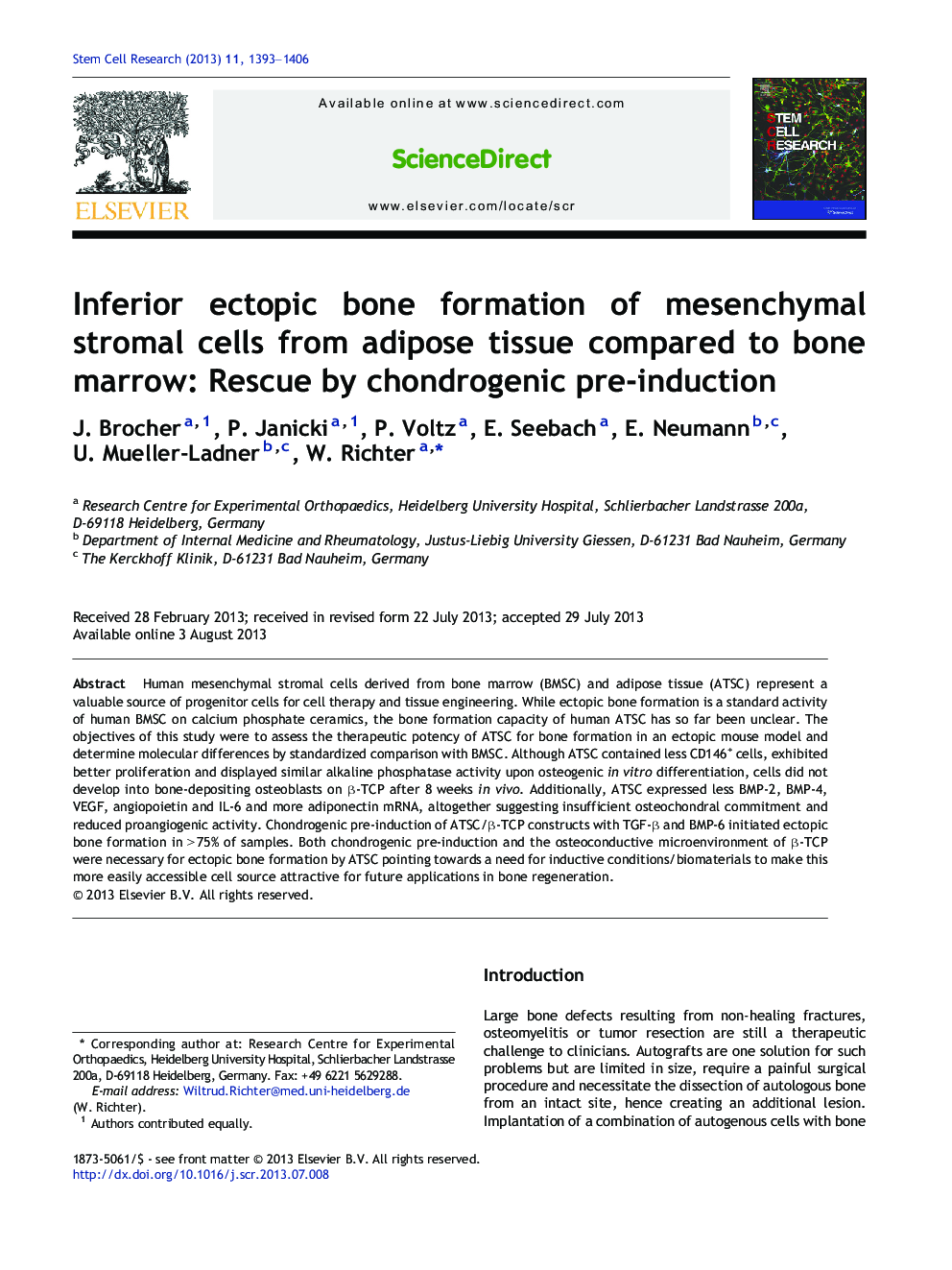| Article ID | Journal | Published Year | Pages | File Type |
|---|---|---|---|---|
| 10891294 | Stem Cell Research | 2013 | 14 Pages |
Abstract
Human mesenchymal stromal cells derived from bone marrow (BMSC) and adipose tissue (ATSC) represent a valuable source of progenitor cells for cell therapy and tissue engineering. While ectopic bone formation is a standard activity of human BMSC on calcium phosphate ceramics, the bone formation capacity of human ATSC has so far been unclear. The objectives of this study were to assess the therapeutic potency of ATSC for bone formation in an ectopic mouse model and determine molecular differences by standardized comparison with BMSC. Although ATSC contained less CD146+ cells, exhibited better proliferation and displayed similar alkaline phosphatase activity upon osteogenic in vitro differentiation, cells did not develop into bone-depositing osteoblasts on β-TCP after 8 weeks in vivo. Additionally, ATSC expressed less BMP-2, BMP-4, VEGF, angiopoietin and IL-6 and more adiponectin mRNA, altogether suggesting insufficient osteochondral commitment and reduced proangiogenic activity. Chondrogenic pre-induction of ATSC/β-TCP constructs with TGF-β and BMP-6 initiated ectopic bone formation in > 75% of samples. Both chondrogenic pre-induction and the osteoconductive microenvironment of β-TCP were necessary for ectopic bone formation by ATSC pointing towards a need for inductive conditions/biomaterials to make this more easily accessible cell source attractive for future applications in bone regeneration.
Related Topics
Life Sciences
Biochemistry, Genetics and Molecular Biology
Biotechnology
Authors
J. Brocher, P. Janicki, P. Voltz, E. Seebach, E. Neumann, U. Mueller-Ladner, W. Richter,
